
Mission
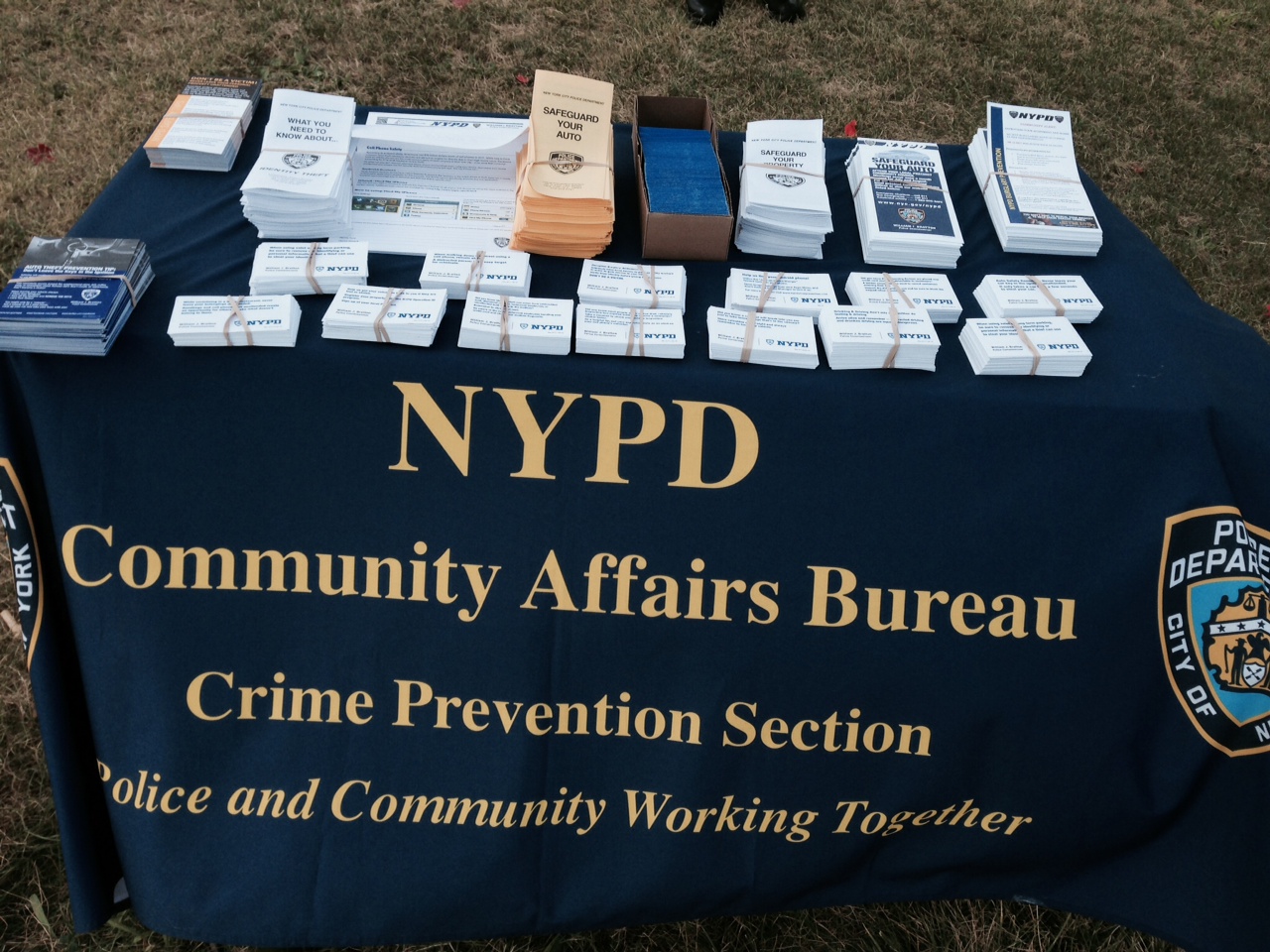
The mission of the Crime Prevention Section is to provide crime deterrent services and programs to the citizens and businesses within the City of New York. Included in this endeavor are programs consisting of informative lectures, crime reduction programs, and outreach initiatives. These complimentary services not only assist in the supression of crime but also minimize the fear and negative perception associated with crime through a working partnership between the police and the community. The Crime Prevention Section is a sub-unit of the Community Affairs Bureau, and consists of a Borough Liaison Team and a Security Team. The Borough Liaison Team act as liaisons with each of the Patrol and Detective Borough commands. Officers attend various crime strategy meetings and assist commanding officers with developing crime prevention strategies at the precinct level. The Borough Liaison Team is responsible for reviewing security surveys conducted by patrol personnel. The primary function of the Security Team is to conduct security surveys and lectures for private venues and civic/government groups. To learn more about the background of the Crime Prevention Section, visit our Crime Prevention Section history page.
Security Surveys

A security survey is a confidential, in-depth written report that evaluates the existing security and procedures of a premise. A private home, for example, may only entail locks, doors, windows and an alarm system. A corporate facility may require addressing a much wider range of needs, such as closed circuit television, electronic access control, fencing, security lighting, mail handling and visitor screening procedures. The survey will address security vulnerabilities and outline corrective measures. The Department provides this service free of charge. The preparation of confidential surveys requires a technical expertise in the field of security that few members of the Department have acquired. Therefore, our personnel must be knowledgeable on new developments in the security industry. Members of the command have been trained or have an extensive knowledge in physical security.
Lectures

The Crime Prevention Section provides lectures to all sectors of the community on a wide variety of topics. A lecture may address a particular crime pattern or issue, or be more generic, based upon the request of the client. The audiences range from kindergarten students to senior citizens.
McGruff

One of the most successful lecture programs conducted by the Section is the Officer McGruff Program. The McGruff Program is a child crime prevention program utilizing the nationally recognized McGruff character to reinforce our Crime Prevention message. This program is highly sought after by schools, community groups and official police sponsored events.
Operation I.D.
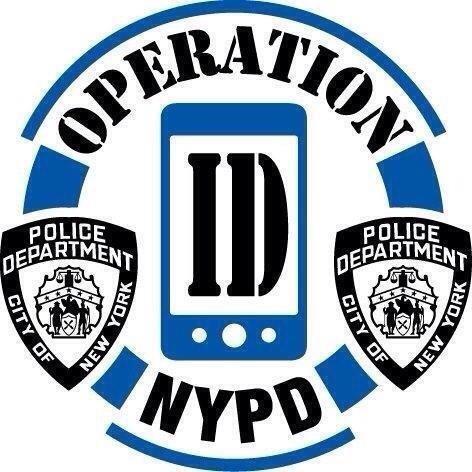
Operation Identification is offered free of charge by the New York City Police Department. The program involves engraving an identifiable serial number with the letters N.Y.C. on all portable valuables such as computers, fax machines, copiers, etc. and registering only the number and the owners name and address with the Police Department. This program can be implemented by contacting your local Precinct's Crime Prevention Officer. The officer will loan you an engraver, which is used to mark all equipment. Benefits from this program include:
- Special New York City Police Department decals are issued which are affixed to windows alerting people that all property contained within, has been registered in this program.
- The marked property is more difficult for a thief to sell.
- Stolen property in the possession of a thief is easily traceable to its rightful owner.
- Found property can easily be identified and returned to the rightful owner.
Combat Auto Theft (CAT)

- Vehicle owners register vehicle at their local precinct, when the car is normally not operated between the hours of 1:00 a.m. and 5:00 a.m.
- Decals are affixed to the rear side windows of the registered vehicle.
- Owner signs waiver giving police the authority to stop vehicle if it is seen being operated during program hours.
Commuter Combat Auto Theft (C-CAT)
- Goal: reduce theft of automobiles parked during the business day by commuters.
- Vehicle will be parked during business hours under normal conditions between 10:00 a.m. and 4:00 p.m.
- Owner signs waiver giving police the right to stop vehicle if it is seen being operated during program hours.
- Decals are similar to CAT decals with the addition of black stripes.
Help End Auto Theft (HEAT)

- Majority of persons arrested for auto theft are under 25 years of age.
- Owner registers vehicle at local precinct.
- Vehicle owner must be at least 40 years of age and signs a waiver stating that persons under 25 years old do not normally operate the vehicle. This waiver further states that the police have the authority to stop the vehicle anytime a person apparently under the age of 25 years old is operating the auto.
Taxi/Livery Robbery Inspection Program (TRIP)
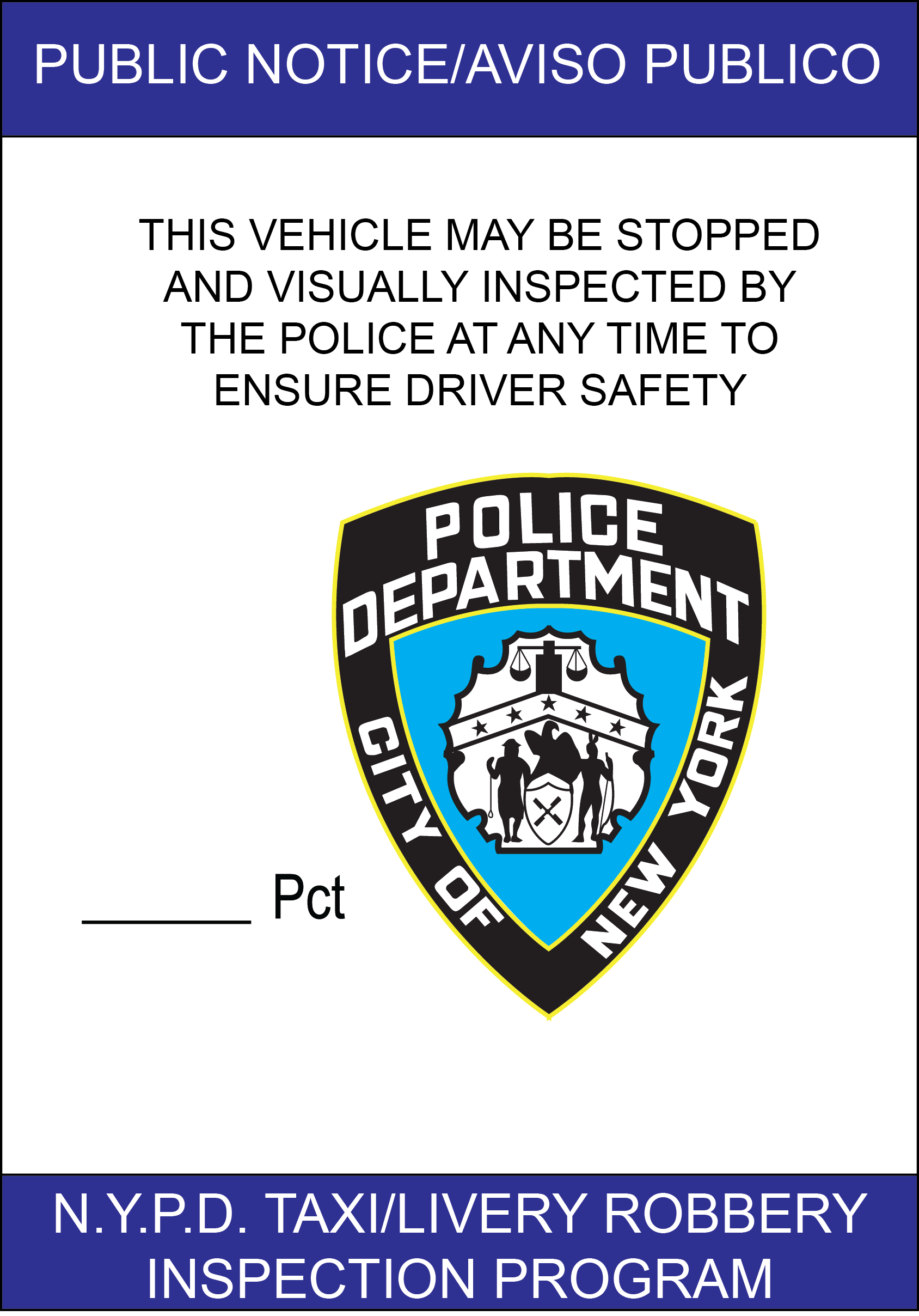
- Goal: to promote taxi & livery driver safety.
- Police are permitted to briefly stop an enrolled vehicle at any time of the day or night to verify the safety of the driver and riders.
Bike Registration
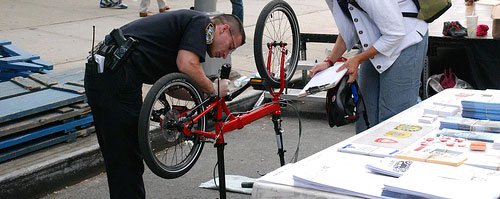
- Goal: to enroll bicycles into the program in each precinct.
- Bicycle is marked with an identification number using an engraver. A decal is affixed to the bicycle, which is difficult to remove. In the event that it is removed "void" appears on what remains of the decal.
- In the event that the bicycle is stolen and recovered, it can be traced back to the owner through I.D. number.
Vin Etching

- The auto's vehicle identification number is etched onto all of the vehicles glass.
- Serves to deter theft and trace the stolen parts.
Brochures
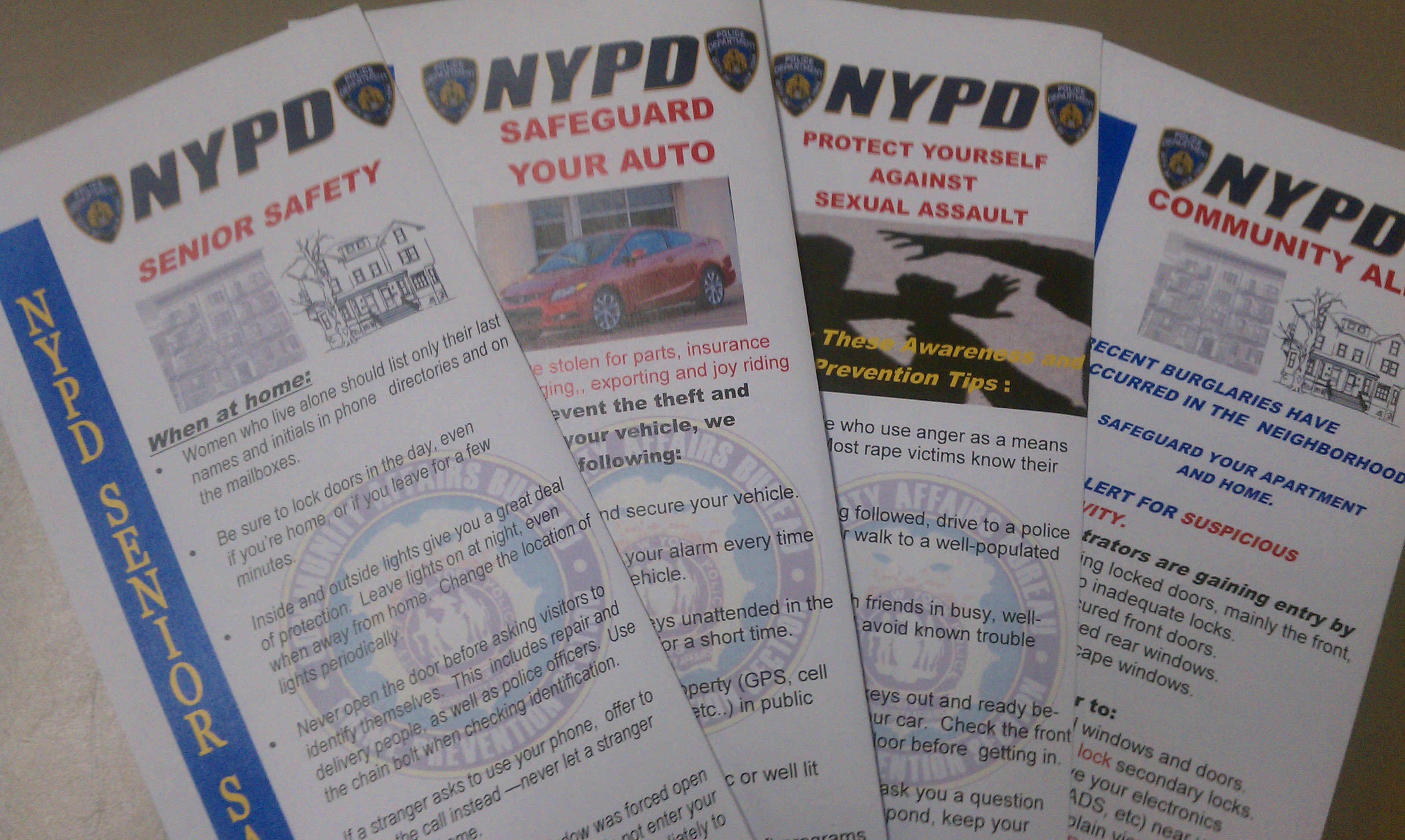
As part of our public education campaign, the Crime Prevention Section has prepared pamphlets and flyers on a variety of topics as they relate to crime prevention. The crime Prevention Section is constantly updating and creating literature on new crime trends to assist precinct and borough commanders in their crime prevention initiatives.




















 - PURSE)
- PURSE)
